Motorsports especially Formula1 is a perfect example of engineering marvel where engineers build extraordinary machines. Artificial Intelligence help engineers innovate faster by harnessing the power of data which plays an crucial role in the split-second decisions on the track, redesigning and maximising the performance of vehicles by running analytics and so much more.
Motivation
The motivation to write this article is that I love working with AI/ML technologies leveraging the cloud and I am big fan of Formula 1.
In Formula 1, AWS powers F1 insights and I took a look under the hood to find some amazing details and the way how it works! So, fasten your seatbelt and we are now going for an amazing learning experience.
About Formula 1
The Fastest Car deserves Fastest Cloud
FORMULA 1 is a battle between the world’s best drivers, but it’s also a battle of some of the world’s most innovative engineers. No other sport has been as dynamic in its evolution and embrace of new technology. While some of the tech goes to helping drivers, who are hitting speeds as high as 230 MPH, taking pit stops in under 2 seconds, and flying around corners with a force of 5G, much of it goes to enhance the experiences of its growing base of over a half a billion fans. This is why AWS is proud to be both the official cloud service and machine learning provider for FORMULA1.
Overview
Technology has always played a central role in the evolution of the sport, but serverless and machine learning are changing how F1 automates, collects, analyzes, and leverages data to make decisions.
F1 is taking the competition to the next level by altering some of the rules around car design. F1 simulates these changes using AWS High Performance Compute services to make sim cycles faster and more sophisticated
F1 uses Amazon SageMaker to build machine learning models that help fans better understand the split-second decisions made by a driver or pit crew that can dramatically affect the outcome.
F1 Data
During a FORMULA 1 Grand Prix every car contains 120 sensors which generate 1.1M telemetry data points per second transmitted from the cars to the pits. This real-time data is combined with over 69 years of historical race data stored on S3 to inform fans and teams about the unparalleled track-side decision making.
Computational Fluid Dynamics Project
Amazon Web Services, Inc. (AWS), an Amazon.com company (NASDAQ: AMZN), and Formula One Group (Formula 1) have completed a Computational Fluid Dynamics (CFD) project to simulate the aerodynamics of cars while racing, carrying out detailed simulations that have resulted in the car design for the 2021 racing season.
The project modelled the impact of one car's aerodynamic wake on another based on 550 million data points running on 1150 compute cores for detailed simulations.
By use of the Amazon Elastic Compute Cloud (Amazon EC2). c5n instances, the average time for running simulations was reduced to 70% which is equivalent to that of a supercomputer. The entire project duration was for 6 months.
The Project addressed some of the common problems and proposed the results with the help of the AWS Machine Learning Platform. Let's look into that.
Downforce Loss
What is Downforce?
For Formula 1 cars, the downforce generated by their aerodynamics is the single largest performance differentiator, helping a car travel faster through corners.
** The Problem: **
- Loss of downforce when they are running close to one another
- Reduces drivers’ ability to sustain close racing and increasing the difficulty of overtaking.
- Currently, a car running one car length behind another loses up to 50 percent of its downforce.
The Solution: F1 used AWS to look closely at how the aerodynamics of cars interact when racing in close proximity. These simulations looked at cars in common racing situations and the results have driven the changes to the proposed 2021 car design.
The Result: Formula 1 has been able to design a car with only 15 percent downforce loss at the same, one car length distance. The resulting car will feature a brand new bodywork design with a new front wing shape, simplified suspension, new rear end layout, underfloor tunnels, wheel wake control devices, and will run on 18-inch wheels with low profile tyres for the first time.
Turbulence
CFD simulates the impact of a liquid or gas on an object and requires extensive compute capacity to perform this kind of simulation, requiring high performance computing (HPC) clusters to do the job.
The Problem: HPC clusters on-premises requires considerable upfront capital expenditure, lengthy procurement cycles, and regular hardware refreshes to avoid obsolescence.
The Solution: AWS provides the most elastic and scalable cloud infrastructure to run HPC applications. With virtually unlimited capacity, engineers, and researches can innovate beyond the limitations of on-premises HPC infrastructure. To complete the CFD work, Formula 1 used AWS ParallelCluster on Amazon EC2 to run the OpenFOAM CFD framework, and Amazon Simple Storage Service (Amazon S3) for data storage.
The Result:
- Leveraging the scalability of the cloud, Formula 1 was able to run CFD simulations on core counts much larger than they were previously able to execute.
- The increased speed with which the aerodynamics team could run detailed, two car turbulence simulations on AWS meant they could increase the number of car designs they could investigate from one to five per week.
- Moving forward, there are plans to expand the application further, up to 2,300 cores, and to introduce AWS Machine Learning (ML) tools, such as Amazon SageMaker, to allow ML technologies to help with the design and further optimise the performance of the car.
AWS Machine Learning with F1 Data
Let's now see some of the F1 insights derived using AWS SageMaker.
F1 Insights by AWS
The F1 insights derived using AWS SageMaker can be put into three major categories
- Race Strategy
- Competitor Analysis
- Car Performance
Let's look into some of the insights under each category
Race Strategy
- Battle Forecast: Using track history and projected driver pace, Battle Forecast will predict how many laps before the chasing car is within ‘striking distance’ of the car in front.
- Pit Strategy Battle: Undercutting and overcutting are strategies used by F1 teams during close racing scenarios to gain a lead over a rival, with the margin between success and failure measured in tenths of a second. Pit Strategy Battle provides fans and commentators with real-time insight on the position of the two rival drivers, the predicted gap after their respective pit stops, and the percentage chance of an overtake, helping fans to assess how successful each driver’s strategy will be in real time and its potential outcome.
Pit Window:
Estimated pit stop windows based on tyre compound, lap times, and spread of cars. Viewers will see how a race can be altered based on race dynamics, including racing strategies of other teams, safety cars, and yellow flags.Predicted Pit Stop Strategy:
Historical data is used to calculate race strategy during the formation lap, comparing predicted tyre and race strategies. This insight allows viewers to see when a driver should strategically make his next pit stop.
Competitor Analysis
Car Analysis and Development:
This insight shows how teams develop their cars, how quickly they develop their cars, and what the on-track result is throughout the season. The development race both during the season and from year to year is the principal KPI for an F1 team, and this provides a unique insight into the inner workings of F1 and how the teams perform against each other in this area.Car Performances:
This insight isolates an individual car’s performance and allows fans to compare its performance to that of different vehicles head-to-head comparing building blocks that make up car performance – namely cornering performance, straight line performance and car balance or handling
- Driver performance: Driver Performance highlights which drivers are pushing their car to the absolute limit of performance in comparison to their teammates and competitors. Calculating the forces generated by a car’s tyres during a lap, and comparing it to the car’s maximum capability, this will show how much of the car’s potential performance is being extracted by the driver. Three parameters will be shown to highlight three key areas of driver performance that have a major effect on the ultimate goal - lap time: Acceleration, Braking, Corners.
- Driver Season Performance:
This provides a breakdown of driver performance based on the most important subset of driving skills by analyzing a wealth of data across effects of the car, tyres, traffic, fuel, and more to a scored output of each driver's performance across the season against seven key metrics – Qualifying Pace, Race Starts, Race Lap 1, Race Pace, Tyre Management, Driver Pit Stop Skill, and Overtaking. These metrics are normalized using from a range of 0-10 to provide a ‘score’ style metric, and provide an insight for viewers, fans and teams alike into where a certain driver’s strengths and weaknesses lie and how they compare to others in the field.
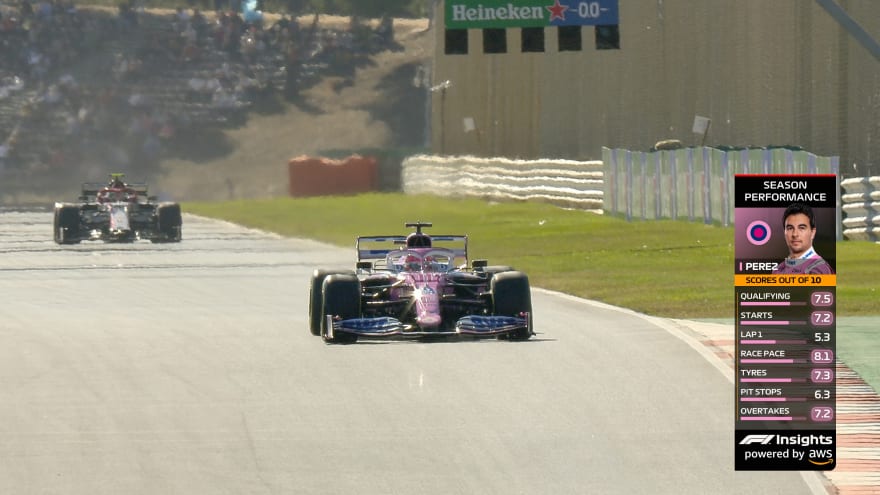
Car Performances
F1 looks closely at aerodynamics, tyre performance, power unit, vehicle dynamics, and vehicle optimisation to offer insights that help fans interpret overall car performance.
Braking Performance:
Braking graphics showing when drivers hit the brakes and how much pressure they apply, the new AWS Insight will take fans even deeper into the black art of braking performance in Formula 1, showing the braking points for each driver, the speed the drivers are travelling at when they hit the anchors, which drivers brake the hardest, the speed decrease difference between different drivers and the maximum g-forces generated.

Corner Analysis:
The single most important area for performance for an F1 car and this offers great insight into how good cars compare against great ones. This breaks the corner down into the 4 principal sections – braking, turn in, mid corner, and exit – analyzing and comparing the performance through the principal sections of a corner via car telemetry data.

Tyre Performance:
Using car data, namely car speed, longitudinal and lateral accelerations, and the Gyro gives us a tyre performance for each corner, which indicates how much the tyre has been used with respect to its ultimate performance life.
AWS & F1
F1 continues to innovate with the Professional Services team and Amazon ML Solutions Lab Team to accelerate development of F1 Insights by prototyping use cases and develop new proofs of concept. The ProServ team then helps F1 get models in to production and integrated into the F1 infrastructure.
References:
The article is a case study of how Formula One leverages AWS for insights.
https://aws.amazon.com/f1/
I do not own/represent any material with respect to FORUMULA 1 and AWS. This is purely for educational purposes.

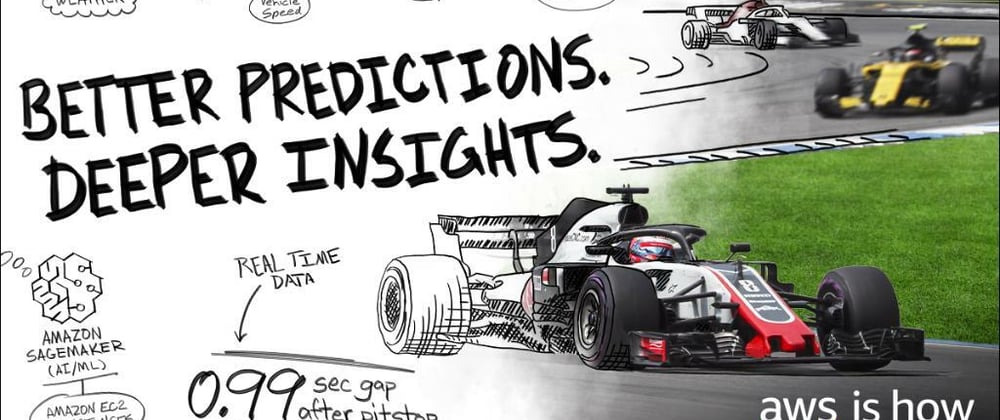
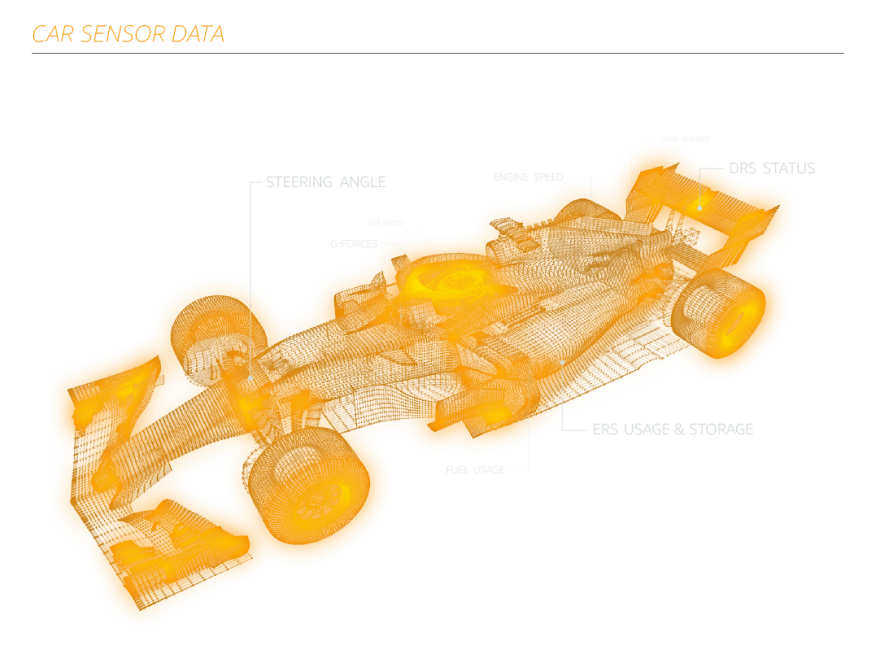
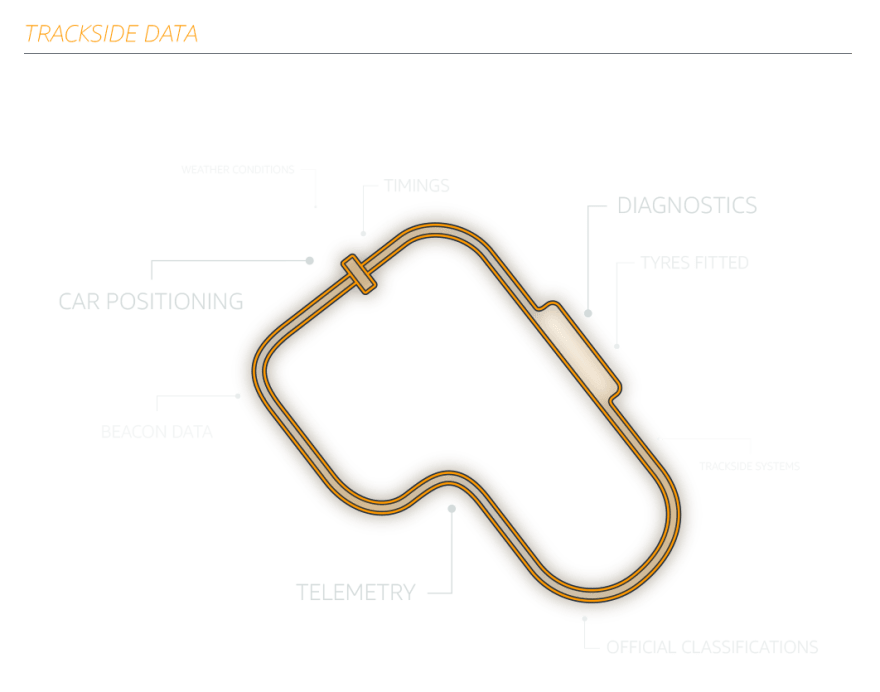


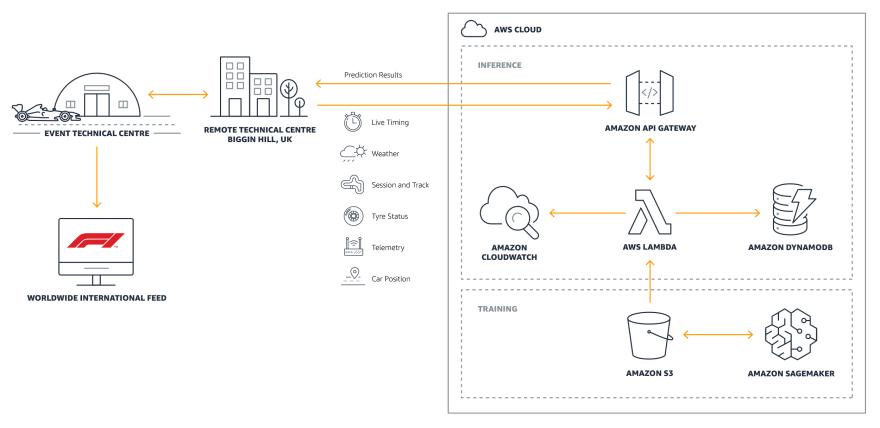
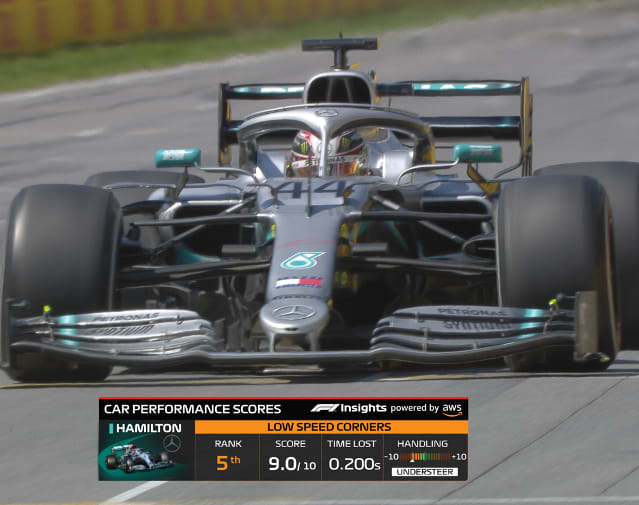
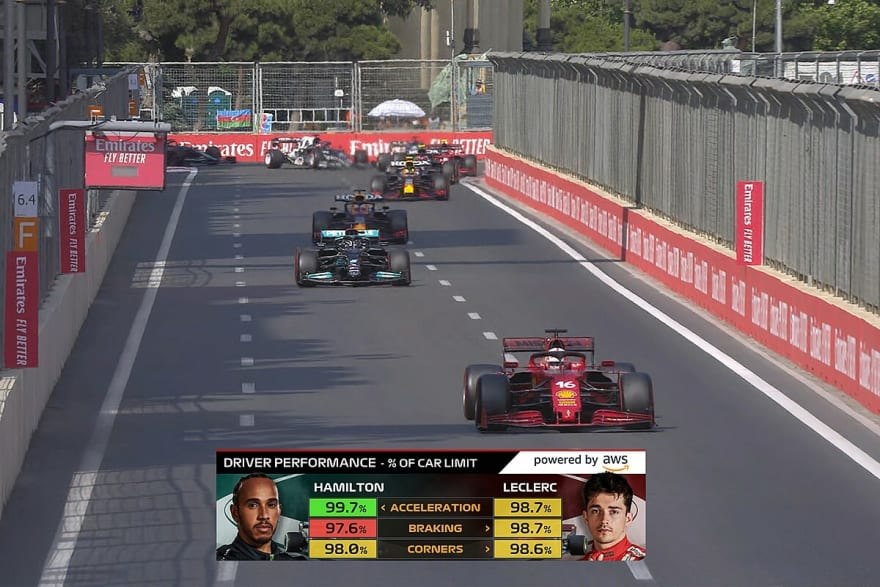





Top comments (0)